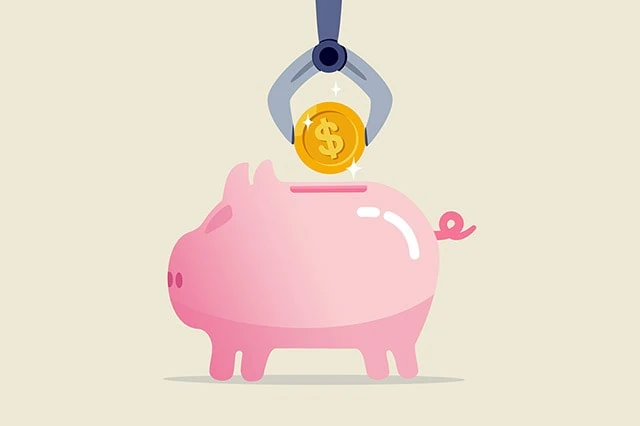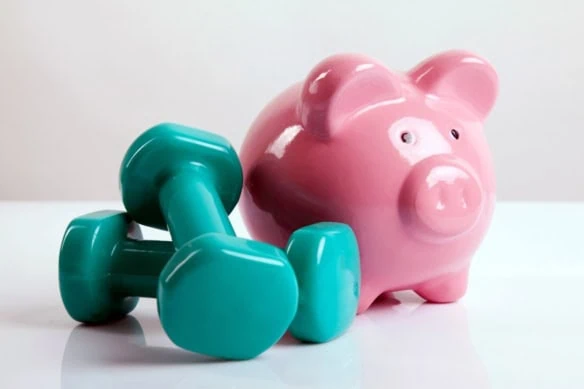You obviously work to make money. But if you want to reach your financial goals (or reach them faster), you also want to make your money work for you, too.
Earning additional money from what you’ve already made doesn’t just earn you more money overall—it gives you more control over your finances. And at a certain point, when your money is appreciating on its own, you won’t have to put in as many (or any!) hours at a job just to make ends meet.
That’s why you should make your money work for you. But what’s more challenging is how to make your money work for you. Fortunately, there are many paths for how to get your money to grow on its own. Even better, many of these strategies are simple to start.
Let’s go over several ways to make your money work for you. The more of these methods you can put into practice, the more potential your wealth has to increase.
What Does It Mean to “Make Your Money Work for You”?
When you have a traditional job, you are working for your money—it’s your time and your effort that are generating a return.
When your money is working for you, you’re not giving any time or effort—it’s your money that’s generating a return.
Put differently: You’re using your money as a tool to make more money.
How to Make Your Money Work for You
Below, I’ve outlined a number of ways in which you can put your money to work for you over time.
By the way: You’re not limited to choosing one strategy. You can mix and match whichever methods work best for your risk tolerance, your goals, and your current financial situation.
1. Build a Budget

Consider this a setup step.
Building a budget technically doesn’t put your money to work for you … but it frees up money that you can then put to work for you, making it a bedrock strategy for growing your wealth.
Budgets provide you with two, sometimes three, core benefits:
- They create a clear picture of your financial situation.
- If you’re losing money, they help you identify where money might be misspent.
- They help you plan out your future expenditures and give you a roadmap to success.
Don’t know how to build a budget? It’s simple. If you’re just starting out, we suggest using a basic spreadsheet program like Google Sheets or Microsoft Excel. (We even have a budget template if you’d like to start with a helping hand.)
Begin by selecting a timeframe. Because most bills are on a monthly basis, most people work with a monthly budget.
Next, list all of your sources of regular income—as in, income you can expect to be there month in and month out. This is typically going to be limited to employment income, but it’s possible you might have income from other sources, such as a legal settlement.
Then, list all of the expenses you expect to incur within a month. This should include a.) fixed necessary expenses like rent or a cell phone bill, b.) variable necessary expenses like utilities and groceries, and c.) discretionary expenses, which include everything you spend on that you don’t actually need—think streaming services or going out to restaurants. It typically helps to look back across several months’ worth of expenses to better understand your variable costs. For instance, if you live in a colder climate, you’ll probably find you spend more on natural gas bills during the winter months than the summer months, and that should affect how you budget from month to month.
If your income is less than your expenses, you need to determine how to get the two numbers level. This can include actions such as cutting back on some discretionary expenditures (or cutting them out completely), or trying to reduce some bills by changing plans or providers. Importantly, if there’s additional room to cut after reaching breakeven, you might consider doing so to free up money to go toward savings.
If your income is more than your expenses, you’re in a good spot! From there, you can see if there are still any additional ways to optimize your budget, and from there, you can get a good idea of how much you can afford to save or invest.
Related: How to Reverse Budget With ‘Pay Yourself First’ Budgeting
2. Earn Interest on Your Cash

OK. You’ve written out a budget and determined you can indeed afford to put some money away every month. And if you’re going to do that, you might as well earn some interest on that saved-up cash.
The answer to this question partly depends on how much access to those savings you need.
High-yield savings accounts (HYSAs)
A basic savings account will keep your money safe, allow you to withdraw it pretty much whenever you want, and even grow your money … a little bit. Usually, you’ll earn a fraction of a percent in annual percentage yield (APY).
A high-yield savings account (HYSA), however, can do much better. Your typical HYSA will earn around 10 times what an average basic savings account will.
It’s extremely easy to open up a high-yield savings account and either put fresh money in there or have it transferred over from another account. And it’s one of the safest ways you can generate interest, as the Federal Deposit Insurance Corporation (FDIC) or National Credit Union Administration (NCUA) will typically insure up to $250,000 per depositor per bank.
The one drawback: Some—not all, but some—HYSAs provide a little less access to your money. Virtually all basic savings accounts allow for limitless transactions, but some high-yield savings accounts will set a limit on monthly transactions. But if you’re only using the account for savings and letting that money grow thanks to compounding interest, that shouldn’t be a meaningful hardship.
One last note: All of the above makes the HYSA an optimal place to save up an emergency fund. You have plenty of access to your cash in the event of a sudden expense, but until you tap that fund, the money can grow.
- Bread Savings High-Yield Savings Accounts are free, take just minutes to open, and carry highly competitive rates (currently 4.20% APY).
- Get started with this FDIC-insured account for as little as $100.
- Interest accrues and compounds daily, and is credited monthly.
Money market accounts
Money market accounts (MMAs) are similar to savings accounts in that you can earn a higher rate than your average savings account while enjoying better access and FDIC or NCUA insurance. But they are different from HYSAs in a few key ways.
For one, money market accounts typically offer higher interest rates than HYSAs. That’s because the bank invests your money into short-term, low-risk assets, which allows the bank to up the ante on the APY.
Also, MMAs actually offer a little more access to your money. While you still might be subject to transaction limits, money market accounts may come with checks, a debit card, or both, making it much easier to tap into that money as soon as you need it.
That said, whereas HYSAs have low or even no account minimums, money market accounts often have a considerable minimum, frequently around $2,500. This can eliminate it as a serious consideration for many people who can’t afford to save much—either they won’t be able to save enough to meet the minimum to begin with, or when it comes time to pay for an emergency, they’ll be forced to withdraw well below the account minimum.
Certificates of deposit (CDs)
You can earn even more interest on a certificate of deposit (CD), which is another financial product sold by banks and credit unions. And like HYSAs and MMAs, they come with FDIC or NCUA insurance.
However, CDs are far less “liquid”—in other words, you have far less access to your money.
With a Certificate of Deposit, you deposit your money for an agreed-upon amount of time. The terms vary but typically range between six months and five years. Once the term is up, you receive your money back with interest.
However, if you try to access your money before the term has expired, you’ll have to pay a penalty for early withdrawal. So you can technically still get to your money while it’s invested in a CD, but there’ll be less of it as a result.
If you’re being strategic, then, a CD is a poor place to save up an emergency fund. But it’s a great place to put your money to work toward savings goals with a defined timeline—like, say, working toward a down payment on a house in three years.
Related: Best Savings Account Alternatives [9 Other Ways to Save]
3. Invest in the Stock Market

A more powerful way to put your money to work is to invest in the stock market. Whereas a HYSA or CD might net you, say, anywhere between 4% and 6% right now, the average annual stock market return, depending on the time period studied, is around 9%-11%.
However, these higher returns come with greater risks. While investment accounts typically are insured, they’re insured against a broker or institution’s failure—but if you invest poorly, the responsibility ultimately falls on you.
Different investment accounts have different characteristics that will ultimately determine how liquid your funds are, what the account should be used for, what you can invest in, and more.
Taxable brokerage accounts
Taxable brokerage accounts are among the most powerful drivers of financial growth, and they’re about as common and easy to open as you could want.
Most brokerage accounts let you invest in basic instruments like stocks, exchange-traded funds (ETFs), and mutual funds, though others let you access more options such as individual bonds, options contracts, futures, and more.
That variety allows you to build a portfolio suited to your savings needs. If you’re willing to take on more risk, you can tap growthier strategies to build your wealth much more rapidly. If you’re more conservative, you can still build passive income streams by holding assets such as dividend stocks and bonds.
There are downsides, of course.
For one, there’s the risk. Your investments could lose value thanks to problems in the underlying companies or even just because of broader economic issues.
There’s also the matter of liquidity. It’s called a “taxable” brokerage account because it has no tax advantages—you contribute with money that has already been taxed, you’re taxed on any income your investments generate, and whenever you sell a position and incur a capital gain, you owe capital gains tax. The flip side is, you can withdraw money from your account whenever you want without penalty—something you usually can’t do with other types of investment accounts.
That said, if you want to withdraw money from a brokerage account, you’ll typically need to sell some of your holdings, then transfer the money to a bank account from which you can actually withdraw the cash. It’s not a massive hurdle, but it takes a little time. Thus, brokerage accounts are best used not for short-term savings goals like emergency funds, but medium- and longer-term goals where you have time to ride out ups and downs in the market and won’t need to withdraw the money at a moment’s notice.
Retirement accounts
Retirement accounts, such as individual retirement accounts (IRAs), Roth IRAs, and 401(k)s, are great investment vehicles because they allow you to invest in stocks, funds, and other securities while also enjoying various tax advantages—and in some cases, bonus money. For instance:
- Traditional IRAs let you invest in virtually everything you can invest in using a traditional brokerage account. However, IRAs are tax-deferred—you contribute pre-tax money, your funds grow tax-free while in the account, and you only pay taxes upon withdrawing the funds.
- Roth IRAs are similar to traditional IRAs, but the tax consequences are flipped. You contribute money that has already been taxed—but your funds grow tax-free while in the account, and they’re not taxed when you withdraw them.
- 401(k)s are tax-deferred just like IRAs. They typically have a much narrower investment selection—often, just a few mutual funds. However, in addition to the contributions you make, employers can pony up funds, too, typically through contribution matches, though some employers provide a contribution even if the worker contributes nothing.
However, in exchange for their different tax advantages, retirement accounts have stricter rules about withdrawing funds. With a few exceptions, you can’t withdraw money from an IRA or 401(k) until age 59½ without incurring penalties. You can withdraw contributions to a Roth IRA before age 59½ without penalty as long as the account has been open for five years, but you have to wait until age 59½ to withdraw earnings penalty-free.
That makes these accounts poor options for most savings goals outside retirement.
- The Betterment app gives you the tools, inspiration, and support you need to become a better investor.
- Start with as little as $10 and use the top-rated mobile app to set up automatic investing into diversified ETF portfolios.
- You can also invest in diversified preset cryptocurrency portfolios.
- Customize your risk tolerance and investment goals with guidance available at any time.
- By upgrading to Premium, you can unlock unlimited financial guidance from a Certified Financial Planner™.
- Hands-off investment management
- Diversified portfolio that automatically rebalances
- Low-cost investment selection
- Limited investment selections
- Limited crypto diversification in cryptocurrency portfolios
Other accounts
You also have access to a variety of other specialized investment accounts, though these too have their own limitations and restrictions.
For instance, you can also invest in health savings accounts (HSAs). HSAs have a “triple tax benefit”: 1.) They allow you to reduce your taxable income (because you contribute pretax dollars), 2.) money in the account can grow tax-free, and 3.) you won’t be taxed on withdrawals made for qualified medical expenses. Investment selections vary by HSA provider.
There are also 529 plans, which are investment accounts specifically designed to pay for educational expenses. 529s also allow money to grow tax-free, and withdrawals aren’t taxed if they’re used on qualified costs. Investment options are limited, however, and plans are state-specific.
|
4.5
|
4.0
|
|
Open Your HSA Today
|
$1.99/contribution, $1.99/gift
|
Related: The 9 Best Dividend Stocks for Beginners
4. Invest in Real Estate

There are several ways to invest in real estate.
The most straightforward way is to buy a house (other than your primary residence) or another residential property, then rent it out to tenants.
This can be a great way to earn a passive income stream, but becoming a landlord also entails a substantial amount of work and requires a lot of capital upfront. If that commitment doesn’t appeal to you, there are other ways to invest, such as buying shares of real estate investment trusts (REITs) in your brokerage or retirement account.
That said, you can also buy into real estate through a crowdfunding platform, such as Fundrise. Fundrise is a popular real estate and alternative asset investing platform that allows you to diversify through its numerous funds. Each fund holds a number of properties and is designed to provide varying levels of risk and income.
Just note that some of Fundrise’s offerings, as well as other private real estate investments, are quite illiquid, locking up your money for several years.
- Regardless of your net worth, you can now benefit from real estate’s unique potential for generating consistent cash flow and long-term gains with Fundrise starting as low as $10.
- Enjoy set-it-and-forget-it managed portfolios with standard Fundrise accounts, or actively select the funds you want to invest in with Fundrise Pro.
- Diversify your portfolio with real estate, private tech investing, or private credit.
- Low minimum investment ($10)
- Accredited and non-accredited investors welcome
- IRA accounts available
- Highly illiquid investment
Related: 11 Best Alternative Investments [Options to Consider]
5. Invest in Art

Real estate is just one example of an “alternative asset”—basically, an investment that falls out of traditional assets such as stocks and bonds.
Another is art.
Once upon a time, fine art used to be available exclusively to the ultra-wealthy. But thanks to technology and specialized platforms, this asset is becoming more accessible to the general public.
Masterworks provides investors with a way to enjoy fractional ownership in shares of famous works of art, created by renowned masters such as Picasso and Banksy. The investment platform’s art experts scour millions of auction records to choose the pieces most likely to grow in value over time.
Again, art is typically a long-term, illiquid investment. While it can make your money work diligently for you, you only want to use money that you won’t need for several years.
- Masterworks allows investors to buy shares in art selected by the platform's team for both high quality and strong value.
- The service offers a secondary market where investors can sell shares if they want to exit their investment early.
- Provides an easy way to invest in art
- Access to dedicated support representative
- Investing requires a call screen consultation
- High fees
- High minimum investment per offering ($15,000), though it can be waived to as low as $500 on a case-by-case basis
Related: Appreciating Assets: 10 Best Things that Appreciate in Value
6. Pay Off High-Interest Debt

“Sure,” you say, “I should pay off my credit card debt. But how is that making my money work for me?”
If a savings account generates compound interest, think of a credit card or loan as generating compound debt. When you take on debt, you have to pay back not only the principal, but any interest that’s charged too. And the longer you take to pay back the principal, the more interest you’ll owe along the way.
With that in mind, sometimes your money will work harder if it’s used to pay off debt rather than grow in a savings or even investment account.
Above, I mentioned that you can expect, on average, 9%-11% in annual returns from the stock market. Let’s call it 10%. If you put $10,000 into the stock market, and you get the average annual return, you’ll earn $1,000 in the first year. However, if you pay off $10,000 in credit card debt that charges a 20% interest rate, you’ll save between $1,800 and $1,900 in interest that you would have paid across the first year. (This assumes you were only going to make the minimum required payment each month, which is primarily interest payments and very little going toward the principal.)
In short: Compare the cost of your debt with the potential earnings from where you planned on saving the money. In almost all situations, paying off high-interest debt like you see with credit cards will generate a better “return” than virtually any savings or investment account.
Low-interest debt, such as a mortgage, is different. For one thing, paying down your mortgage gradually each month is a form of savings, since you’re building equity in your home as you pay down your loan principal. However, depending on your mortgage’s interest rate, you may be able to earn a higher return on reasonably safe investments than what you’re paying on your mortgage. So consider low-interest debt more carefully.
Related: 5 Best Money Market Funds [Protect Your Savings]
7. Automate Your Finances

Putting your finances on autopilot can help your money work for you by ensuring you never miss a bill—and subject your savings to the late fees that come along with that.
Similarly, you’re likely to save more if you put your savings on autopilot. Many jobs will let you split your paycheck between two accounts, which means you can send most of your income to your main bank account to pay your monthly expenses, while directing some of your paycheck straight into a savings account where it can earn you interest (more on that below). This way, you aren’t as tempted to spend that extra money.
Alternatively, you can set up automatic transfers from a checking account into a savings account to ensure you’re setting money aside on a regular basis. Again, the idea is to automate the hard work of saving instead of spending so your wealth can grow over time.
The SoFi® Checking & Savings Account sounds like your run-of-the-mill bank account, but it’s more: It’s also a high-yield savings account that earns far more than the national average percentage yield (APY)2 and more than the average high-yield account. Better still, it boosts your ability to save right off the bat by rewarding you with up to $300 upon sign-up.1
- SoFi's Checking & Savings Account is an account with no monthly fees and an above-average APY on the savings side that offers a number of perks, especially if you meet certain direct deposit monthly minimums.
- Receive up to 3.60% APY² with eligible direct deposit or $5,000 or more in qualifying deposits during the 30-day evaluation period. (Members without eligible direct deposit earn 1.00% APY on savings and 0.50% APY on checking.)
- Earn up to 4.30% APY on SoFi Savings with a 0.70% APY Boost (added to 3.60% base APY as of 11/12/25) for up to 6 months.⁸
- Your money is FDIC-insured up to $250,000. You can also access additional insurance up to $3 million on deposits through a seamless network of participating banks.⁴
- Round up debit card purchases, and the excess is automatically sent to your savings.
- Special Offer: If you set up a qualifying direct deposit within the promotion period, you can earn up to a $300 cash bonus.¹
- Above-average yield (3.80% APY) on its high-yield savings account²
- No monthly fees, no overdraft fees³
- Up to $3 million in FDIC insurance⁴
- Round-ups
- Offers up to $50 of overdraft coverage with direct deposit of at least $1,000 monthly⁷
- Many perks tied to direct deposits
- High direct deposit threshold for maximum cash bonus
Related: 7 Best Growth Stocks to Buy [Find Your Edge]
How Do I Stop Working for Money and Make My Money Work For Me?
There’s no get-rich-quick solution to this question. The answer largely boils down to making intelligent decisions, practicing a little bit of self-control, and letting time do the rest.
For instance, the earlier you start putting your money to work (whether that’s via a brokerage account or even just a high-yield savings account), the longer you can benefit from compounding—and thus, the more wealth you’ll build over time.
Also, try to be consistent. Set aside a target amount each week or each month. The more you make saving a habit, the less likely you’ll be to stop.
And remember: There are other little things you can do. If you’re good about paying off your credit card every month, credit card rewards like cash back can help you save a percentage point or two on every purchase.
Lastly, be patient. Instant-wealth schemes are often scams. By contrast, the strategies above sure aren’t flashy, but they’re tried-and-true ways of eventually becoming financially independent.
How Building Passive Income and Making More Money Gives You Freedom
Creating a passive income gives you more freedom in how you spend your time, and it can relieve you from some of the burdens of financial stress.
Some passive income strategies take time to get rolling, while others generate some amount of passive income right from the get-go.
For instance, once you buy stocks that pay dividends, your work is done—you simply receive payouts on a regular schedule. By contrast, if you buy real estate to rent out, it could take some initial work, such as renovating the property and hiring a property manager to handle the day-to-day responsibilities before you ever see a rent check.
Either way, once you’ve created a reliable source of passive income, you become less financially dependent on your day job. That extra income might not pay all your bills right away, but over time, it can increasingly supplement—and one day replace—your paycheck.
Related:













![10 Best Investments for Roth IRA Accounts [Tax-Smart Growth] 35 best investments for roth ira](https://youngandtheinvested.com/wp-content/uploads/best-investments-for-roth-ira.webp)
![How to Use Your HSA for Retirement [Tax-Efficient Investing Tool] 36 how to use your HSA in retirement](https://youngandtheinvested.com/wp-content/uploads/how-to-use-your-hsa-in-retirement-600x403.png.webp)
